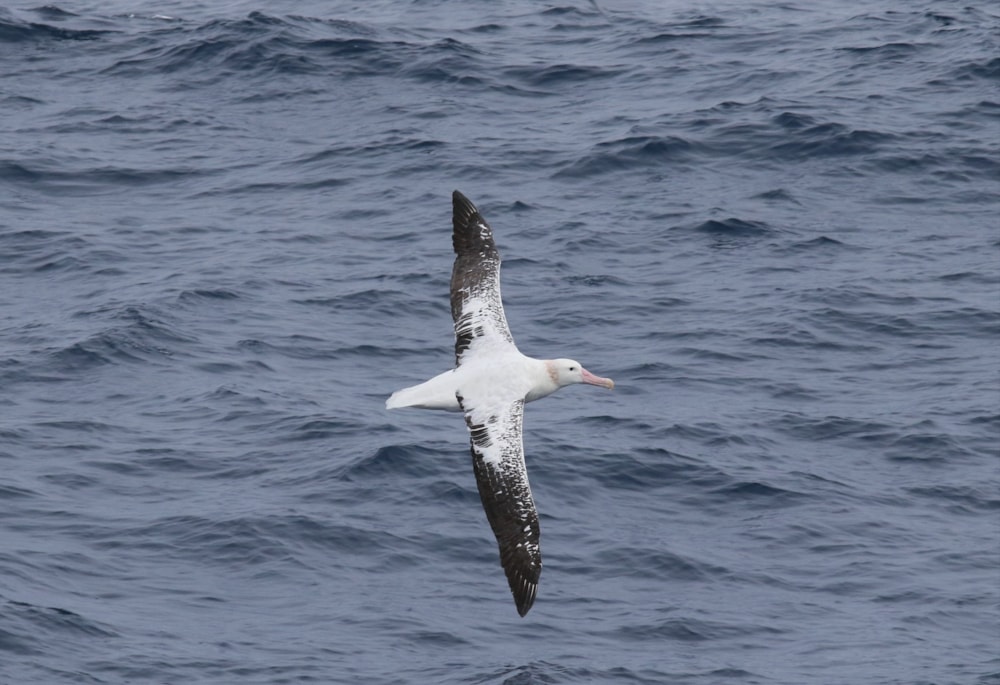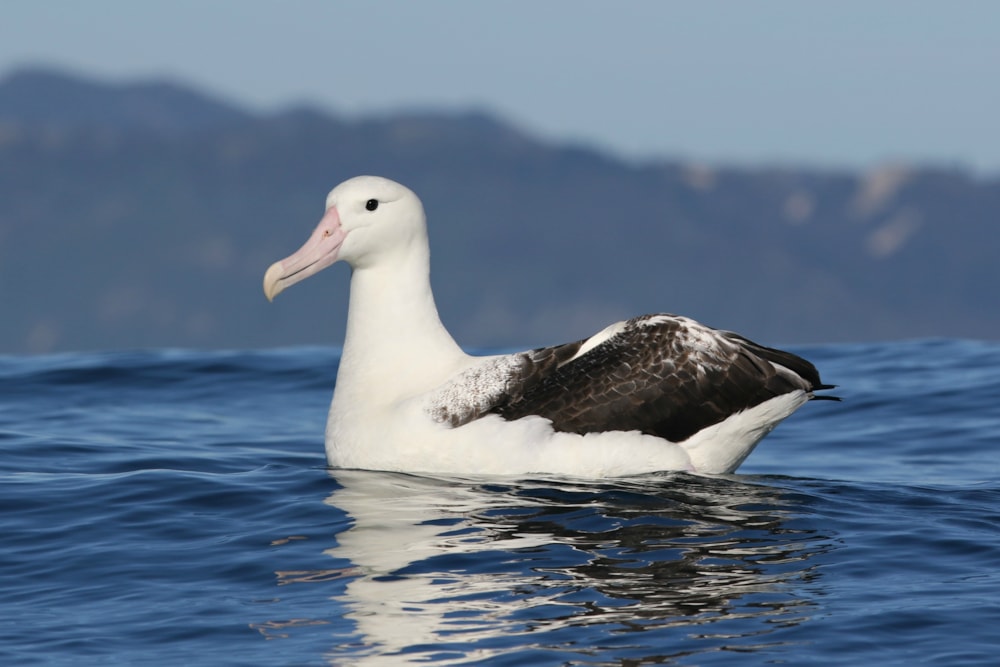The world's largest flying seabirds are proving an effective frontline agent in the fight against illegal fishing, according to a recently published study.
As reported by BirdGuides in November 2018, a 'squadron' of 169 albatrosses was deployed in the Indian Ocean as part of Operation Ocean Sentinel for six months. The birds, fitted with cutting-edge communications gear, were employed to identify vessels fishing in prohibited waters in the Indian and Southern Oceans.
And the newly published findings have revealed that a third of the vessels plying the icy but resource-rich Antarctic waters below the Indian Ocean are very likely unlawfully filling their hulls with toothfish, ice fish, krill and other bounty.

Wandering Albatrosses have revealed the extent of illegal fishing in the Southern Ocean (Matthew Eade).
"It's the first time we've had an estimate like this for detecting illegal fishing ships," commented Henri Weimerskirch, a marine biologist at France's National Centre for Scientific Research and lead author of the study, in the journal PNAS.
The birds cover great distances and are particularly attracted to fishing boats – especially the fish or fish parts thrown overboard – making them perfectly adapted for the mission, explained Weimerskirch. In the six months starting in November 2018, the tagged albatrosses patrolled more than 47 million sq km of open ocean, unwittingly acting as data-collecting 'spies'.
Scientists designed a lightweight device with a GPS antenna to track location, another antenna to detect ship radar and a third to send the data back to headquarters – with a solar panel to power them all. The units were mounted on the backs of the birds, which seemed unperturbed by the extra cargo.
All registered fishing vessels have an automated identification system (AIS) that is supposed to remain activated.
"On certain Chinese or Spanish ships the signal suddenly goes silent when they approach an economic zone," Weimerskirch said. "That means they're fishing in the boundary area."
But even when a ship turns off the AIS system, it still needs radar to navigate and avoid collisions, which gave researchers something else to home in on.

The tagged albatrosses patrolled more than 47 million sq km of open ocean (Richard Bonser).
Airborne albatrosses can spot a vessel from 30 km away, and will consistently come in for a closer look once they do. When a bird zeros in on a boat, its logger detects the radar signal and sends the co-ordinates back to the scientists. Of 353 radar contacts made, about 30% were from vessels that had turned off their AIS systems. If they were in national waters, this is a likely sign of illegal activity.
The albatross data had unintentionally revealed the potential extent and scale of illegal fishing in the Southern Ocean. "They're like drones, only intelligent," said Weimerskirch of his adopted 'spies'.
Co-author Samantha Patrick added: "Their pioneering role in animal-led data collection paves the way for other species to track the human activities that risk their persistence in the wild."
Reference
Henri Weimerskirch, H, Collet, J, Corbeau, A, Pajot, A, Hoarau, F, Marteau, C, Filippi, D, and Patrick, S C. 2019. Ocean sentinel albatrosses locate illegal vessels and provide the first estimate of the extent of nondeclared fishing. PNAS, DOI: https://doi.org/10.1073/pnas.1915499117

